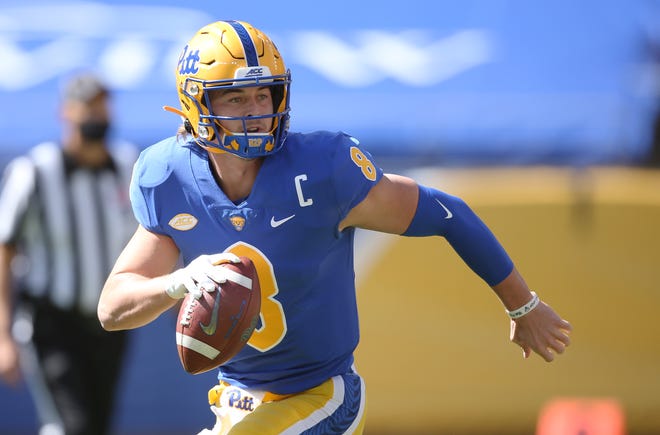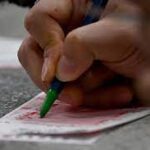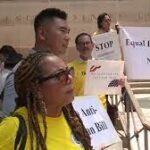The ‘raggedy eight’ with a stuffed cod who took on the elite to row in the Olympics

They were a knockabout bunch: railway workers, musicians, a coffin-maker, veterans of war.
One rowed with shrapnel in his back, sometimes in great pain.
They raced with a small, dried Murray cod strapped to the bow of their boat.
And against huge odds — a lack of money, class prejudice and the devastating interruption of World War One — they went all the way to the Paris Olympics of 1924.
First sinking, then soaring
The Cods, as they came to be known, had a humble beginning in 1909, in the South Australian town of Murray Bridge.
Their first clubhouse was built by volunteers using jarrah sleepers and iron girders that mysteriously arrived on site (one advantage of counting railway workers as members).
Initially, the Cods were just as interested in fishing as rowing.
They didn't go too well in their first regatta; they swamped and were almost run down by a paddle steamer.
One of the crew, Bub Jarvis, wrote in his diary:
"We left Murray Bridge 10 foot tall. We came back with wet arses and no fish."
But their fortunes improved dramatically after a chance meeting with a man named Teddy Higgs.
The son of a timber merchant and boatbuilder, Higgs had grown up in Tasmania, where he learned to row.
He was on his way to Kalgoorlie to try his luck in the goldfields when his train stopped at Murray Bridge.
He saw some of the Cods down at the river and offered to take them out for a training row. He never left.
The club found him a job with the railways and he became their coach.
The lower Murray suited Higgs's coaching principle that "mileage makes champions".
Trevor Sullivan, Higgs's grandson, says "a typical training session was a row from Murray Bridge down to Tailem Bend and back".
"That would have been 30 miles for the day," he says.
"Whenever there was a paddle steamer he liked to get the guys to race it."
The crew dubbed "the raggedy eight" was soon beating all the genteel city teams.
In 1913, the Cods won the state championship by 250 yards, and claimed the right to compete at the national level.
But the Adelaide establishment was determined to keep the working-class rowers out of amateur gentleman's sport.
"The city crews accused the Cods of being professionals, because a couple of them had won footraces for a shilling prize," Murray Bridge Rowing Club treasurer Chris McRae says.
After a lot of politicking, the Cods went on to win the national eight-oared championship, in a first for South Australia.
The devastation of war
But then came World War One.
What happened to the eight men in that Cods boat was a kind of microcosm of the war.
Coxswain Robert Woodhead lost an eye and part of his hand at Gallipoli, and never rowed again.
Hedley Joyce died in the carnage at Noreuil, along with half his battalion.
Arthur Scott was wounded in battle on the Western Front. He disobeyed orders and went searching for his missing brother, only to find he'd been killed.
Scott was jailed and later released on compassionate grounds.
Frank Cummings returned with shrapnel inoperably lodged in his back, but continued to row.
Ted Thomas, a handsome larrikin and ladies' man, enjoyed his time in France despite getting a lung full of mustard gas.
And one of the Cods, a carpenter named Wally Pfeiffer, was a conscientious objector.
Wally also made coffins and was apprenticed to the local undertaker; this perhaps gave him more insight into death than some of the other young men racing off to war.
'Paris or the bush!'
After the Armistice, Higgs rebuilt the crew and in 1920 the Cods won the eight-oared championship of Australia, which became known as the King's Cup.
They won again in 1922 and '23: despite their age, they were still the best eight in Australia.
The 1924 Paris Olympics were beckoning — but several obstacles were put in the Cod's way.
The first was Pfeiffer's conscientious objection to the war.
Some in the RSL argued that because he hadn't represented his country in the war, he shouldn't be allowed to represent it at the Olympics.
But the Cods who had served rallied around Pfeiffer and said, "if he doesn't go, neither do we".
This won the argument and Pfeiffer stayed as stroke of the crew.
At the final test race, with the South Australian crowd cheering "It's Paris or the bush!", the Cods beat Western Australia to qualify for the Olympics.
But there was one other problem: there was no money left in the Australian Olympic Committee's budget.
So the people of Murray Bridge went into fund-raising mode.
Wealthy pastoralist Sir Sidney Kidman donated a prize bull to be auctioned.
Within a few months they'd raised enough to get the Cods and their boat to Paris.
The Cods couldn't afford to stay in Paris, so they moved to Nogent on the Marne river.
Their allowance of one shilling a day each still didn't go far enough.
Luckily, they had other talents.
Four of the Cods were jazz musicians.
They busked, and played for weddings — and other, more risqué, gigs.
"One night they actually played for a dance event where all of the dancers were wearing nothing but their dancing shoes. It was the '20s," Chris McRae says.
After two weeks at Nogent Sur Marne they had to move to the Olympic rowing course at Argenteuil. They decided to row the whole way, carrying their boat over the locks.
At Argenteuil they had bad billets and bad food. Two of the crew came down with dysentery.
An old crew in an old boat, hampered by illness, the Cods came second in their heat.
They lost by one length in the repechage, and didn't make the Olympic final.
Coxswain Bob Cummings summed it up in his diary: "Had hard luck, did our best."
Before the Cods returned to Australia, they visited Versailles, and their mates' graves on the Western Front.
Then, they settled quietly back into their lives in Murray Bridge.
The original Cods mascot looks a bit like a dried kipper these days, but Murray Bridge Rowing Club secretary Stacy Seidel says it won't be forgotten when the club moves to new premises next year.
"In the new boat shed it will be given pride of place, that's for sure."
[contf]
[contfnew]
ABC .net
[contfnewc]
[contfnewc]























